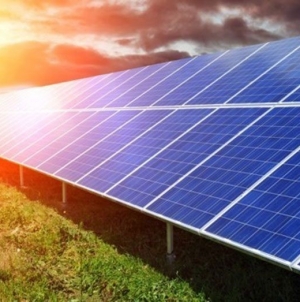Guyana erred by allowing Exxon to dump toxic water into ocean
During his time as head of the Environmental Protection Agency (EPA), Dr. Vincent Adams, was insistent that oil giants like ExxonMobil must conduct their operations following international rules and standards while adhering to the local laws and regulations. The environmental engineer kept true to this approach up to his last assignment before being sent on leave in August last.
During a recent interview on Kaieteur Radio’s programme, “Governance, Corruption and Justice,” the former head revealed that he was the person leading the charge that ExxonMobil should have in place, the relevant technology to re-inject any and all toxic water extracted during the oil production process. Dr. Adams was asked to be part of the team that was responsible for reviewing ExxonMobil’s field development plan for the Payara project which would produce 220,000 barrels of oil by 2025.
Unfortunately, he was not allowed to be part of the conclusion of the consultations as he was unexpectedly sent on 126 days leave, with the government announcing recently that his contract would not be renewed. Once he was out of the way, ExxonMobil, it appeared, got its way since it was not required to put any technology for re-injection in place for the Payara project. In fact, the company’s environmental permit states that it can go ahead with dumping toxic water into the ocean so long as it is treated to international standards. The permit also calls for a feasibility study to be done to assess the cost of re-injecting the water.
Upon taking note of this, Dr. Adams said he is of the firm belief that Guyana has made a great blunder. He said, “Now this toxic water which you are referring to is usually called ‘produced water.’ It is the water that comes up when you drill for the oil and extract it. It’s basically high brine content in some reservoirs. Now brine could be several times the salinity of seawater, etc. It’s really salt, and it has all kinds of minerals in it and we don’t know what they are or what effect it can have on the marine environment.”
He added, “The water is also hot because it’s coming from very, very deep beneath the seafloor. As a matter of fact… the temperature close to the Liza Destiny (increases) by like 38 degrees centigrade. That’s hot! So you can’t tell me that that’s not gonna impact the environment…”
Dr. Adams also stressed that the World Bank has set a standard which states that the first option for disposing of produced water must be re-injection.
The experienced professional who has over 30 years’ experience working the US Department of Energy (DOE) said, “I worked in the oilfield as a field engineer, production engineer, reservoir engineer, and every drop of produced water had to be re-injected into the reservoir…”
The former EPA Head said that ExxonMobil’s dumping of the water works out cheaper for the company while alluding to the fact that there will be long term effects for the environment. He said that ExxonMobil simply did not want to invest $300M in technology to keep Guyanese safe. “So what they are saying in other words is that the health, safety and the environment of the people of Guyana is not worth this US$300M,” the petroleum engineer concluded.
In a previous interview, Dr. Adams had expressed concerns about Payara project being allowed to dump produced water into the ocean since this is already occurring for the Liza Phase One Operations. It will also occur for the Liza Phase Two Project.
Research conducted by Kaieteur News notes that studies are required to be done to assess the environmental risks of the produced water’s toxicity on marine life before granting approval for the disposal of it into the ocean.
In Guyana’s case, not a single study was done for the Liza Phase One or Two Projects. Yet, the authorities of the day went full steam ahead with allowing this to occur.
Dr. Vincent Adams had told this newspaper that the Liza Destiny vessel in the Stabroek Block is already dumping 4,000 barrels of produced water into the ocean and in about six years, it will get to about 300,000 barrels.






















